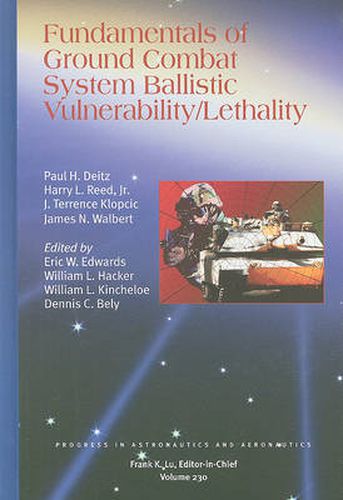Readings Newsletter
Become a Readings Member to make your shopping experience even easier.
Sign in or sign up for free!
You’re not far away from qualifying for FREE standard shipping within Australia
You’ve qualified for FREE standard shipping within Australia
The cart is loading…






While the focus of this book is on ground combat system vulnerability, many of the principles, methodologies, and tools discussed are also applicable to the air and sea system communities. The book begins by introducing the basic language, history, and uses of Vulnerability and Lethality (V/L) analysis, then discusses elements of the V/L analysis process, including the Missions and Means Framework (MMF), initial representations and damage mechanisms, component and personnel dysfunction, target response, and tactical utility. Vulnerability assessment and measures of effectiveness, including mission effectiveness, fault trees, degraded states, and networked systems is followed by V/L modeling and simulation, including empirical/semi-empirical, phenomenological, engineering, system, and force-level modeling; geometric representation; computer environments; and, verification, validation, and accreditation (VV&A). V/L application topics such as system acquisition, system life cycle, vulnerability reduction, and tactics and doctrine complete the book.The book is further enhanced with appendices covering such topics as the characterization of penetrating fragments and behind-armor debris (BAD), details on estimating component probability of damage, a case study of an actual VV&A implementation, and more recent developments and applications of the MMF. The complexity of the material has been kept to a modest level to be understandable to those who are entering the discipline as well as to serve as a handy reference for those who regularly practice these disciplines. An attempt has been made not only to share those areas where significant progress has been made but also to identify those areas where methodology is weak or currently nonexistent.
$9.00 standard shipping within Australia
FREE standard shipping within Australia for orders over $100.00
Express & International shipping calculated at checkout
While the focus of this book is on ground combat system vulnerability, many of the principles, methodologies, and tools discussed are also applicable to the air and sea system communities. The book begins by introducing the basic language, history, and uses of Vulnerability and Lethality (V/L) analysis, then discusses elements of the V/L analysis process, including the Missions and Means Framework (MMF), initial representations and damage mechanisms, component and personnel dysfunction, target response, and tactical utility. Vulnerability assessment and measures of effectiveness, including mission effectiveness, fault trees, degraded states, and networked systems is followed by V/L modeling and simulation, including empirical/semi-empirical, phenomenological, engineering, system, and force-level modeling; geometric representation; computer environments; and, verification, validation, and accreditation (VV&A). V/L application topics such as system acquisition, system life cycle, vulnerability reduction, and tactics and doctrine complete the book.The book is further enhanced with appendices covering such topics as the characterization of penetrating fragments and behind-armor debris (BAD), details on estimating component probability of damage, a case study of an actual VV&A implementation, and more recent developments and applications of the MMF. The complexity of the material has been kept to a modest level to be understandable to those who are entering the discipline as well as to serve as a handy reference for those who regularly practice these disciplines. An attempt has been made not only to share those areas where significant progress has been made but also to identify those areas where methodology is weak or currently nonexistent.